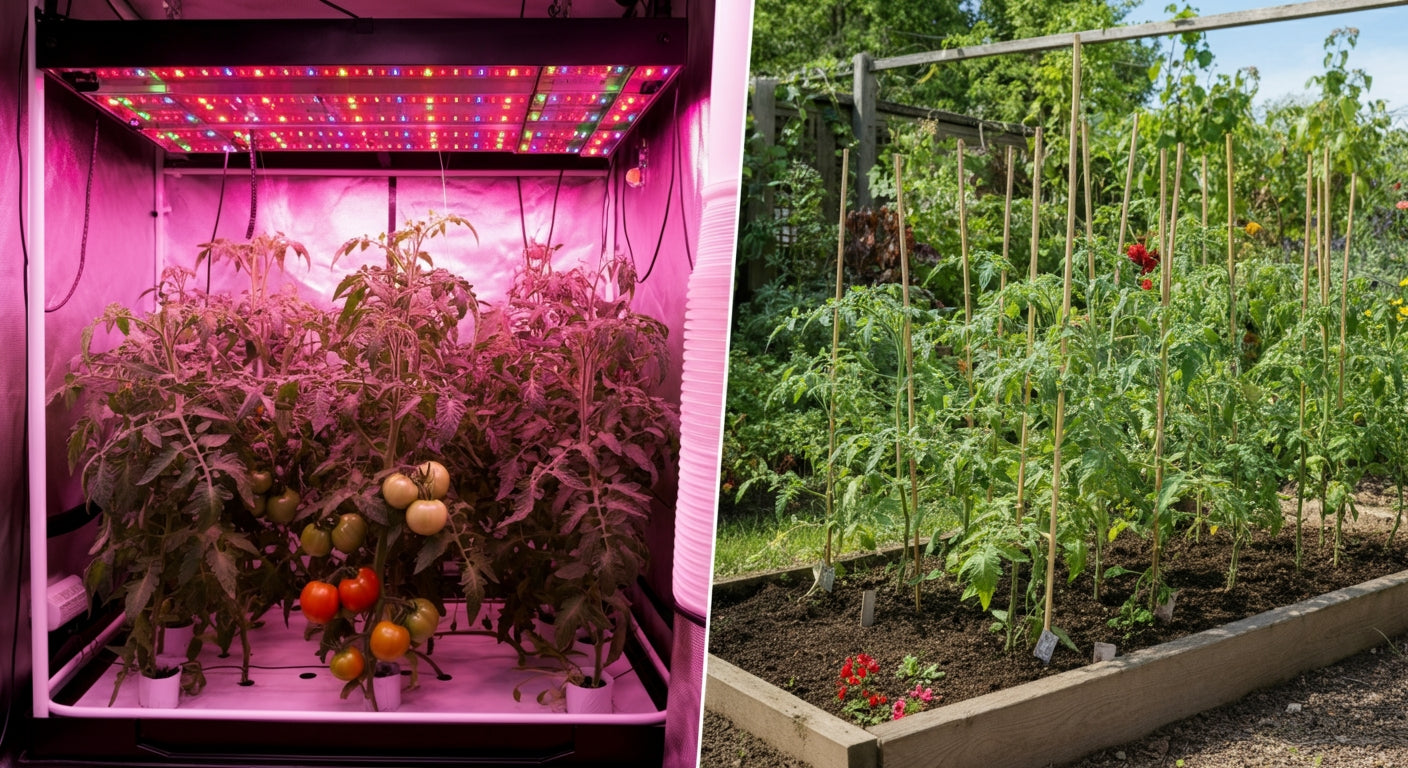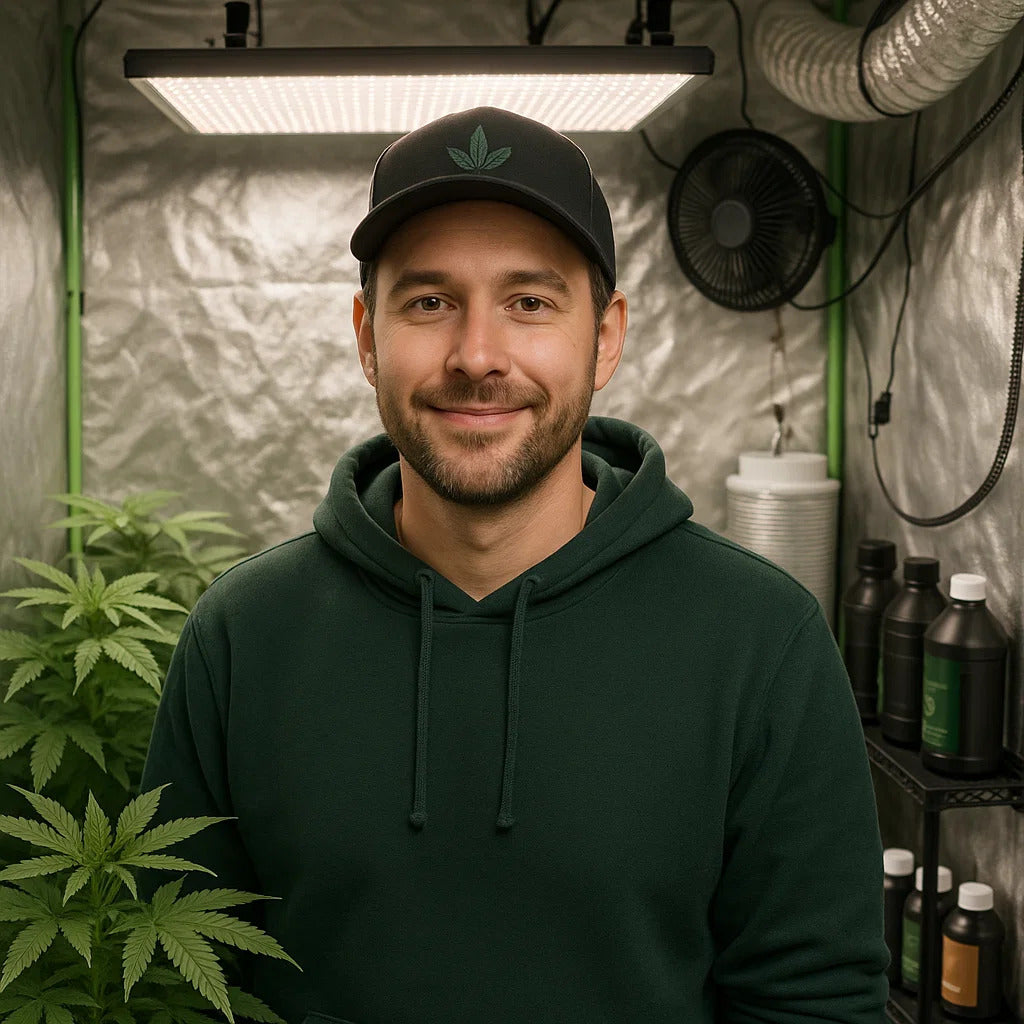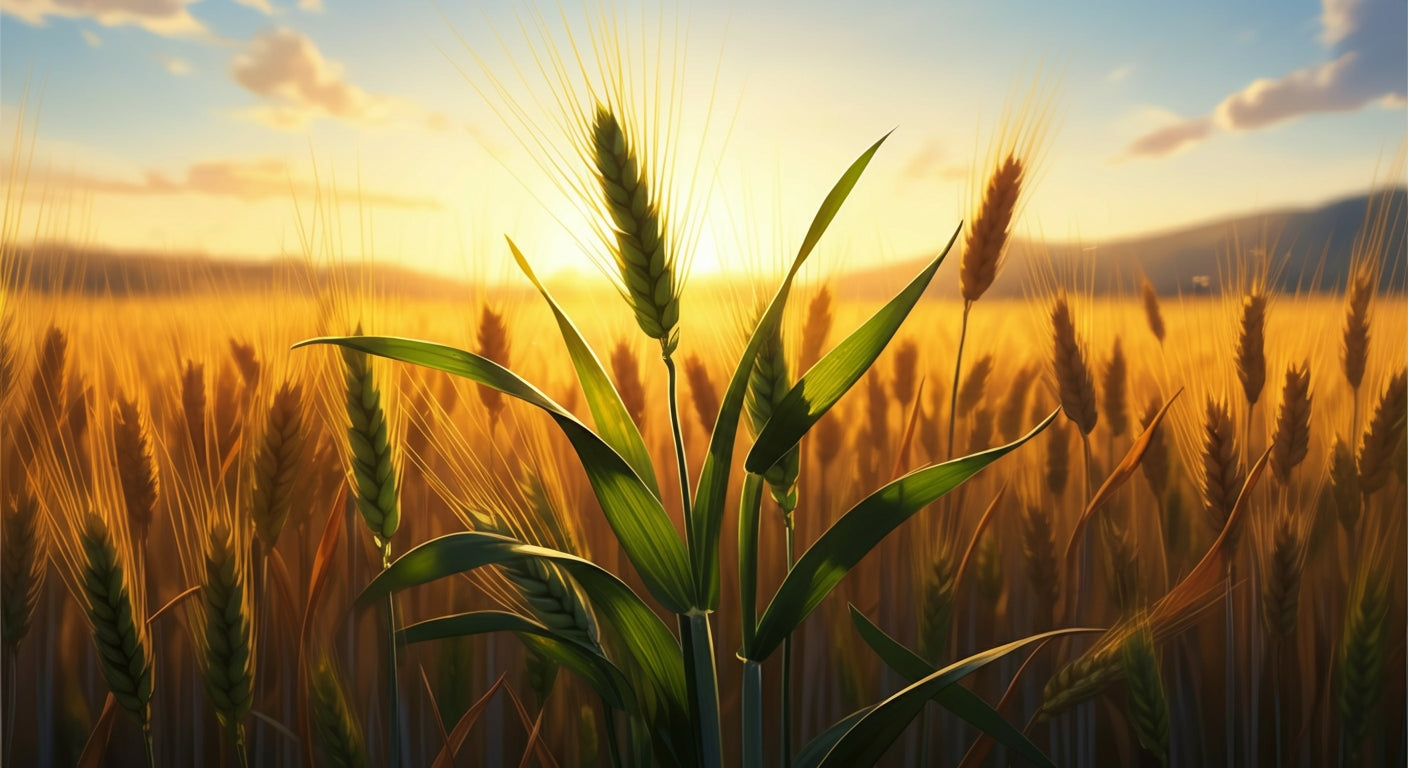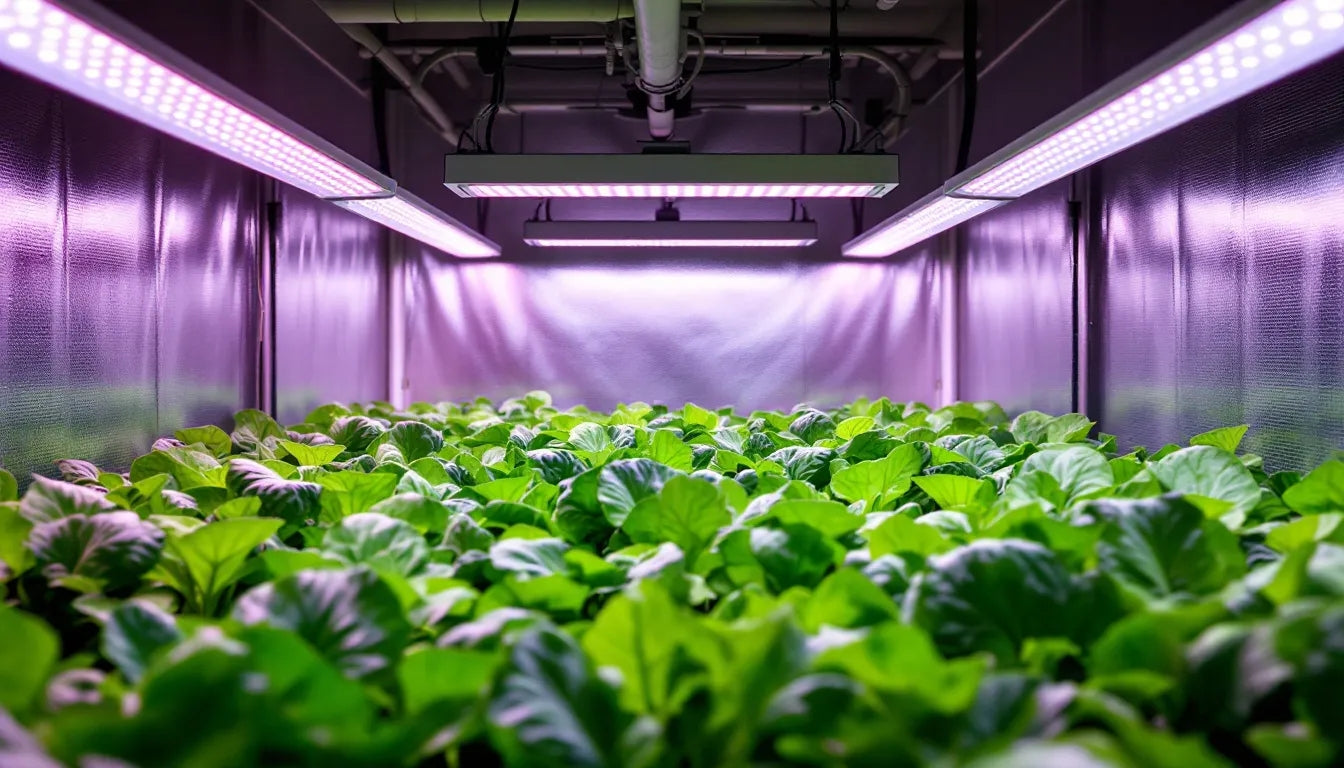
How to Grow Plant: Complete Beginner's Guide to Cultivation 2025
Growing plants can seem intimidating at first, but with the right knowledge and equipment, anyone can cultivate high-quality plants at home. This comprehensive guide walks you through every step of the growing process, from choosing your setup to harvesting premium buds.
Whether you're interested in indoor growing for complete environmental control or considering outdoor cultivation, understanding the fundamentals ensures successful results. Modern growing techniques and equipment have made cultivation more accessible than ever before.
Important Note: Only grow where it's legally permitted. Always check your local and state laws before beginning cultivation.

Getting Started: Indoor vs Outdoor Growing
Indoor Growing Advantages
Indoor cultivation offers complete environmental control, allowing you to optimize every aspect of plant growth. You can grow year-round regardless of climate, maintain consistent quality, and keep your operation completely private and secure.
Indoor grow tents provide the perfect controlled environment for beginners. Gorilla Grow Tents feature industrial-grade construction with 1680D fabric density that's 9x thicker than standard tents, ensuring complete light control and durability for long-term success.
Indoor growing requires initial equipment investment but produces consistently higher-quality results with multiple harvests per year possible.
Outdoor Growing Benefits
Outdoor cultivation harnesses natural sunlight's full spectrum power, often producing larger plants with impressive yields. Operating costs remain low after initial setup, and the environmental impact stays minimal compared to indoor growing.
However, outdoor growing depends on climate conditions, seasonal limitations, and local weather patterns. You'll also have less control over pests, diseases, and environmental factors.
Choosing Your Growing Method
Beginners often find indoor growing more forgiving due to complete environmental control. Complete grow tent setups provide everything needed to get started with professional results from your first grow.
Essential Equipment for Indoor Growing
Grow Tent Selection
Your grow tent serves as the foundation of your indoor garden. Size selection depends on your space and growing goals.
For beginners, a 3x3 grow tent accommodates 1-4 plants comfortably, while experienced growers often prefer 5x5 grow tents for larger harvests and multiple strains.
Quality matters significantly in tent selection. Professional tents feature reinforced stitching, industrial-grade zippers, and superior light-proofing that prevents light leaks during crucial dark periods.
Lighting Systems
LED grow lights have become the gold standard for cultivation. They offer superior efficiency, controllable spectrums, and significantly lower heat output compared to traditional lighting options.
Full-spectrum LEDs provide optimal light wavelengths throughout all growth phases. Calculate approximately 30-50 watts per square foot for LED lighting – a 4x4 tent typically requires 480-800 watts of LED power for optimal results.
Modern LED systems include features like dimming controls, spectrum adjustment, and programmable schedules that optimize plant development throughout the growing cycle.
Ventilation and Climate Control
Proper airflow prevents mold, controls temperature, and strengthens plant stems through gentle air movement. Install intake and exhaust fans to create continuous air exchange within your growing space.
Carbon filters eliminate odors completely – essential for discrete growing operations. Position exhaust fans at the tent's highest point, as warm air naturally rises and needs removal.
Professional ventilation systems include oscillating fans for direct air movement to plants, simulating natural breezes that strengthen stems and improve nutrient uptake.

Understanding Plant Growth Stages
Germination: Starting Your Seeds
Seeds require warm, moist conditions to germinate successfully. Place seeds between damp paper towels in a warm, dark location for 24-72 hours until tap roots appear.
Temperature should remain between 70-85°F (21-29°C) with high humidity around 70-80%. Once tap roots emerge, carefully transfer seeds to your chosen growing medium.
Handle germinated seeds gently – the tap root is extremely fragile and damage can kill the developing plant.
Seedling Stage: First 2-3 Weeks
Young seedlings require gentle conditions with moderate lighting and consistent moisture. Gradually increase light intensity as plants develop their first true leaves beyond the initial cotyledons.
Maintain temperatures around 68-77°F (20-25°C) with humidity levels between 65-70%. Overwatering kills more seedlings than underwatering – allow soil to dry slightly between waterings.
Small grow tents provide perfect environments for seedlings, offering controlled conditions without overwhelming young plants with excessive space.
Vegetative Stage: Building Strong Plants
During vegetative growth, plants focus on developing strong root systems, sturdy stems, and abundant foliage. This stage typically lasts 4-8 weeks depending on desired plant size.
Maintain 18-24 hours of daily lighting to prevent premature flowering. Temperatures can increase to 70-85°F (21-29°C) with humidity levels between 40-70%.
This stage offers the best opportunities for plant training techniques that increase yields and manage plant shape and size.
Flowering Stage: Bud Development
Flowering begins when you switch to 12 hours light/12 hours darkness daily. This photoperiod triggers hormonal changes that initiate bud development in most strains.
Maintain complete darkness during dark periods – even small light leaks can disrupt flowering and cause plants to revert to vegetative growth or develop hermaphrodite characteristics.
Reduce humidity to 40-50% during flowering to prevent mold and optimize terpene development. Lower humidity during the final weeks promotes resin production and enhances final product quality.
Growing Medium and Nutrition
Soil vs Hydroponic Systems
Soil growing offers simplicity and forgiveness for beginners. High-quality organic soil provides natural nutrients and beneficial microorganisms that support plant health throughout the growing cycle.
Quality potting soil mixed with perlite for drainage creates an excellent growing medium that requires minimal monitoring for new growers.
Hydroponic systems enable faster growth and potentially larger yields but require more precise nutrient management and monitoring. Consider starting with soil for your first grows before advancing to hydroponics.
Nutrient Management
Lotus Nutrients provide complete nutrition solutions designed specifically for cultivation, offering simplified feeding schedules without compromising plant health.
Plants require different nutrient ratios during vegetative and flowering stages. Vegetative growth demands higher nitrogen levels, while flowering requires increased phosphorus and potassium for proper bud development.
Cal-Mag supplements address common deficiencies, particularly important when using LED lighting or coco coir growing media.
pH and Water Quality
Monitor pH levels regularly – soil should maintain 6.0-7.0 pH, while hydroponic systems prefer 5.5-6.5 pH. Incorrect pH prevents nutrient uptake regardless of feeding schedules.
Use pH testing kits or digital pH meters to ensure optimal nutrient availability. Most nutrients include pH adjustment instructions to maintain proper levels throughout the growing cycle.
Plant Training Techniques for Bigger Yields
Low-Stress Training (LST)
LST involves gently bending and securing branches to create even canopy heights and increase flowering sites exposed to light. Start training early when branches are flexible and easy to manipulate.
Tie branches down using soft plant ties or LST clips, creating horizontal growth patterns that expose more bud sites to direct lighting.
Topping and Pruning
Topping involves cutting the main stem to encourage bushier growth and multiple main colas instead of one central stem. Perform topping during early vegetative growth to allow adequate recovery time.
Remove lower branches that receive insufficient light to focus plant energy on productive upper growth. This technique becomes particularly important for indoor plants with limited vertical space.
Screen of Green (SCROG)
SCROG uses a horizontal screen or net to create even canopy heights and support developing branches. Install the screen during early vegetative growth and weave branches through openings as they grow.
SCROG netting provides excellent support for heavy flowering branches while maximizing light penetration throughout the canopy.
Environmental Control and Monitoring
Temperature Management
Maintain consistent temperatures throughout the growing cycle. Vegetative plants prefer 70-85°F (21-29°C) during lights-on periods with slightly cooler nights around 65-75°F (18-24°C).
Flowering plants benefit from slightly cooler conditions, around 65-80°F (18-27°C), with more significant day/night temperature differences that can enhance color development and terpene production.
Humidity Control
Humidity requirements change throughout the growing cycle. Seedlings need high humidity (65-70%), vegetative plants require moderate levels (40-70%), and flowering plants perform best with lower humidity (40-50%).
Professional dehumidifiers become essential equipment for maintaining optimal conditions, especially during flowering when excess humidity can cause mold and bud rot.
Air Circulation
Install oscillating fans to provide gentle air movement directly to plants. This simulates natural breezes, strengthens stems, and prevents stagnant air that can harbor pests and diseases.
Ensure air circulation reaches all parts of your plants, including lower branches and the area around the soil surface where fungal issues often develop.
Common Problems and Solutions
Nutrient Deficiencies
Yellowing leaves often indicate nitrogen deficiency, while brown spots or leaf edges suggest potassium or phosphorus issues. Balanced nutrition programs prevent most common deficiency problems.
Monitor your plants daily for early signs of nutrient issues. Catching problems early allows for quick corrections that prevent significant impact on final yields.
Pest Management
Common pests include spider mites, aphids, and fungus gnats. Regular inspection helps catch infestations early when they're easier to control.
Beneficial insects, neem oil, and insecticidal soaps provide organic pest control options that don't compromise final product quality.
Environmental Issues
Light burn appears as bleached or yellowed leaf tips closest to grow lights. Raise lights or reduce intensity to prevent damage while maintaining adequate light levels for growth.
Heat stress causes leaves to curl upward and appear dried or crispy. Improve ventilation, reduce lighting intensity, or add air conditioning to maintain optimal temperatures.
Harvesting and Processing
Determining Harvest Time
Harvest timing significantly impacts potency and effects. Use a jeweler's loupe or digital microscope to examine trichomes – the tiny resin glands covering buds and leaves.
Clear trichomes indicate early harvest with energetic effects, cloudy trichomes show peak potency, and amber trichomes suggest increased sedative effects.
Most strains require 8-12 weeks of flowering before reaching optimal harvest maturity, but trichome examination provides the most accurate harvest timing method.
Harvesting Process
Cut branches individually and remove large fan leaves immediately. Trim smaller sugar leaves either before or after drying, depending on your preference and available time.
Hanging drying racks provide efficient drying space within your existing grow setup, maintaining proper spacing for optimal airflow.
Drying and Curing
Proper drying preserves potency and prevents mold development. Maintain 60-65°F (15-18°C) with 45-55% humidity during the 7-14 day drying process.
Curing involves storing dried buds in airtight glass jars, opening them daily for the first few weeks to release excess moisture. Proper curing enhances flavor, smoothness, and potency significantly.
Setting Up Your First Grow
Planning Your Space
Choose a location with adequate electrical access, ventilation possibilities, and privacy. Complete grow tent kits include everything needed for successful cultivation in a single purchase.
Consider your local climate when selecting equipment. Hot climates require more robust cooling systems, while cold regions need adequate heating during winter months.
Equipment Checklist
Essential equipment includes: grow tent, LED lighting, ventilation system, growing medium, nutrients, pH testing kit, thermometer/hygrometer, and basic hand tools for maintenance.
Professional growing accessories like timers, rope ratchets, and pruning tools make daily maintenance easier and more efficient.
First Grow Tips
Start with proven, beginner-friendly strains known for resilience and forgiveness. Avoid complicated training techniques on your first grow – focus on maintaining proper environmental conditions and basic plant care.
Keep detailed notes throughout your first grow, recording feeding schedules, environmental conditions, and plant responses. This information becomes invaluable for improving future grows.
Legal Considerations
Know Your Local Laws
Laws vary significantly by location. Ensure you understand local regulations regarding plant counts, possession limits, and growing location requirements before beginning cultivation.
Some areas require medical cards for home cultivation, while others allow recreational growing for adults. Research all applicable laws thoroughly to ensure complete compliance.
Security and Discretion
Maintain discretion through proper odor control using carbon filters and secure growing areas that prevent unauthorized access. Quality equipment ensures your growing operation remains completely private.
Secure grow cabinets provide additional security layers with locking mechanisms for growers requiring maximum discretion and security.
FAQ Section
How long does it take to grow plants from seed to harvest? Complete growing cycles typically take 3-5 months: 2-4 weeks for seedling stage, 4-8 weeks vegetative growth, plus 8-12 weeks flowering. Autoflowering varieties complete full cycles in 10-12 weeks total.
How much can I expect from one plant? Indoor yields typically range from 1-4 ounces per plant depending on strain, growing method, and experience level. Outdoor plants can produce significantly more with proper care and optimal conditions.
What's the best strain for beginners? Choose indica-dominant strains known for resilience and shorter flowering times. Popular beginner strains include Northern Lights, Blue Dream, and White Widow for their forgiving nature and consistent results.
How much does it cost to start growing? Initial setup costs range from $300-1500 depending on tent size and equipment quality. Higher initial investment in quality equipment saves money long-term through improved yields and equipment longevity.
Do I need special nutrients? While plants can grow with general plant nutrients, specialized nutrients are formulated for optimal growth and provide better results with simpler feeding schedules.
Quick Growing Summary
Successful cultivation requires proper equipment, environmental control, and attention to plant needs throughout all growth stages. Start with quality equipment like professional grow tents and LED lighting for consistent results.
Focus on maintaining stable environmental conditions, proper nutrition, and basic plant care rather than complicated techniques for your first grows.
Ready to start your growing journey? Explore our complete selection of grow tent systems designed for successful cultivation. Our professional equipment ensures optimal growing conditions from seed to harvest. Check our latest deals to get started with premium growing equipment at competitive prices.

Lena Myles
I'm a mushroom enthusiast and home cook based in Oregon. I'm passionate about foraging and creating fungi-focused recipes, especially delicious, plant-based dishes using gourmet mushrooms like trumpet, shiitake, and oyster. When I’m not in the kitchen, you’ll usually find me wandering the woods in search of new wild flavors.


